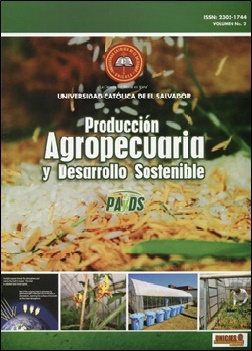Use of selection indexes in the identification of drought tolerant rice genotypes (Oryza sativa L.)
DOI:
https://doi.org/10.5377/payds.v2i0.4326Keywords:
Oryza sativa L., drought, yield potential, flood, selection index, tridimensional graphicsAbstract
Twelve rice genotypes were studied in field conditions, in flooded conditions and in moderate and severe drought environments. Split-parcel design with two repetitions was used, locating in parcels the treatment irrigation managements (three) and in sub-parcel the genotypes (twelve), with a separation of ten meters for controlling the lateral filtration.
Direct seeding was done in rows, using a density of 80 Kg. ha-1. Yield in grain was adjusted to 14 % of moisture. For each genotype was determined the tolerance to drought using the following selection indexes: Stress Susceptibility Index (SSI), Geometric Mean Productivity (GMP), Mean Productivity (MP), Harmonic Mean (HM), Stress Tolerance Index (STI), Yield Index (YI), Yield Stability Index (YSI), and Index of Drought Resistance (IDR).
Significant differences were observed between yield in drought conditions and stress in the Geometric Mean Productivity (GMP), Harmonic Media (HM), and Mean Productivity (MP). The correlation coefficients indicate that these indexes could be used to identify rice genotypes tolerant to drought. The analysis of tridimensional graphics indicate that IR71706 is the most tolerant genotype to drought, and can be sown in irrigation conditions and dryness.
Producción Agropecuaria y Desarrollo Sostenible, Vol. 2, 2014: 11-31
Downloads
1123
Downloads
Published
How to Cite
Issue
Section
License
© Producción Agropecuaria y Desarrollo Sostenible
Copyright of the articles is transferred to the journal Producción Agropecuaria y Desarrollo Sostenible
As a user of this journal, you have:
- Open access to consult the information contained in this issue
- Permission to copy, distribute, display, perform or combine past practices in the use of information, provided it is strictly non-profit.
This journal uses a CC BY-NC license





